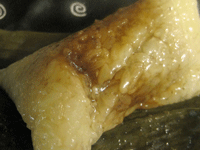-
Posts
28 -
Joined
-
Last visited
Contact Methods
-
Website URL
http://madamehuang.com
Recent Profile Visitors
The recent visitors block is disabled and is not being shown to other users.
-

Chewy Salty Soy Bean Snack - Looking for Recipe 筍豆
Carolyn Phillips replied to a topic in China: Cooking & Baking
The recipe above is basically a good one. (And yes, just use sliced licorice root, which can be found in most Chinese grocery stores.) If you like the flavor, a terrific thing to add is dried, salted bamboo shoots, which are called yulanpian 玉蘭片, or "magnolia petals." Soak them until soft, cut off the hard parts and discard, and shred the shoots. Chop them up until they're the same size as the soybeans, and then add them to the braise. They infuse the beans with a lovely fermented flavor. Adjust the salt in the recipe accordingly, of course. Lots of shredded ginger is good, too. As for oil, I wouldn't add any. These are meant to be eaten with the fingers as snacks, rather than as sides for congee and suchlike. -
Oh, I'm in heaven. Thank you so much!
-
Oh wow, that looks so delicious, and the photos are great! Do you know whether they ever available outside of China?
-
A very late reply to Panaderia Canadiense's question of April 9 w/r/t bamboo leaves... In Taiwan, my understanding was that they generally used the largest bamboo leaves they could find, which are from the Indocalamus or "giant leaf" bamboo (http://www.lewisbamboo.com/tessinfo.html). After I read your question, I happily went to my two Chinese books on bamboo, thinking that I'd be able to nail the answer with all sorts of details in a second. Strangely enough, the articles were about growing bamboo, as well as making furniture, hats, etc., but not one about cooking with the shoots or wrapping with the leaves! Very frustrating. There is an interesting article in Chinese on the varieties of bamboo leaves used for wrapping tamales -- including the lumber bamboo (mazhu) which seems to be grown everywhere in Taiwan -- as well as the spotted brown bamboo shoot sheaths that are used to wrap certain kinds of Chinese tamales. (The ones I tried that were enclosed in these beautiful leopard-patterned [yet much thicker] wrappers tended to be pork tamales.) This blog says that the best of these sheaths come from Makino bamboo (guizhu), which IIRC are also used as lumber and so are quite huge. Anyway, here is the article complete with photos: http://npuir.npust.edu.tw:8080/index.php?op=ViewArticle&articleId=705&blogId=2 Hope this helps, and sorry for the lateness of this reply (deadlines, always deadlines). A blanket offer to anyone with a question or comment for me which I don't respond to right away is to drop me an email. That tends to prod me out of my catatonia.
-
Any recipes or pictures you could share? It sounds incredibly good...
-
This is brilliant! What did those honey mushrooms smell and taste like, how did you use them, and where were they grown?
-
Second that emotion w/r/t the great idea for this discussion. And canna leaves! That is so cool! I am going to try that soon. As my love is Chinese food, I often cook with bamboo leaves and lotus leaves -- which have been mentioned above -- and they are not only pretty, but they impart a wonderful fragrance to whatever they contain. Chinese tamales (zongzi) take on a particularly beautiful shape, as shown here: /monthly_04_2012/post-69576-0-23675200-1333951775.gif' class='ipsAttachLink ipsAttachLink_image'>/monthly_04_2012/post-69576-0-06608800-1333951799.gif' class='ipsAttachLink ipsAttachLink_image'>
-
My green grocer Felipe says that they are just too expensive to sell here in the Bay Area, and they rot before he unloads them. A trip to Berkeley Bowl confirmed that with some pretty fruits bearing scary prices. Good news: Latino markets often sell the pulp frozen. Mi Mercado in East Palo Alto sometimes has it. I'd call around to places like that to see if they have it in stock.
-
I agree wholeheartedly with everyone who loves Chaozhou (aka Teochew or Chiuchow) cuisine. It has to be one of the best around, especially when seafood is on the menu. A dish that is quite popular in Taiwan is Dry Fried Flounder, and I'm pretty certain that this is from Chaozhou, since it has all of the flavor elements of that region. Does anyone know for sure? Anyway, I never could find a recipe for a dish that we always order in restaurants, so I had a lot of try & fail experiences in working this one out. Finally, after too many attempts to mention, I'm happy to report complete success! This is my own recipe, so I hope you enjoy it as much as we do... 9. Bring the sauce to a quick boil and pour it over the fish. Serve immediately. Tips NOTE: SERVE THIS ONLY TO PEOPLE WHO UNDERSTAND THAT THE BONES ARE NOT TO BE EATEN, ONLY THE FINS AND FRILLS. The bones inside the flesh will be hard and are inedible. Do not serve this to people who are unclear on this point, and this includes children, as they could choke on the hard bones. Use whatever local flatfish you have that is sustainable and tasty. This link gives some good suggestions. Do not use a fish that is much larger than a pound here unless you have a restaurant-sized wok. The ratio of fish to hot oil is important, and if the fish is either too thick or too long, it won't cook fast enough and will crumble. Be sure to use a large amount of oil here. This is crucial to achieving the correct balance of crisp edges and succulent meat before the skeleton cooks too and the fish dissolves into a sodden mess. Salting the fish helps draw out more of the moisture, since water in hot oil explodes. Also, it lowers the temperature of the oil, and the drier the fish, the faster it cooks. When drying the fish, don't skimp on the paper towels. The oil can be reused, since flounder and other flatfish are very mild flavored. Just strain the cooled oil and store it in a cool, dark place, like the fridge. Toss it whenever it starts to darken or have a strong aroma. Once you master this dish, make it your own. Season it with other aromatics, or even change the sauce. It's up to you.
-
Sounds like a terrific idea! Do you need recipe testers?
-
Ha! I'm really looking forward to hearing how your experiment turns out, annachan. Are you salting it first, or using any sort of marinade?
-
Made a wonderful Cantonese dessert tonight, just milk that is gelled up with fresh ginger juice. Easy and really delicious! Ginger milk pudding -- 薑汁撞奶 Jiangzhi zhuang nai Makes 4 servings 1 large finger of fresh ginger, either young or brown-skinned Large pinch of sea salt 4 tablespoons agave nectar, plus more for the topping, or sugar to taste 2 cups fresh, organic, full fat milk 1. Grate the ginger. Squeeze the pulp over a fine grater placed on top of a small measuring cup until you have 4 tablespoons of ginger juice. Set out 4 dessert bowls with little more than half a cup capacity. Stir the juice and pour a tablespoon into each bowl. 2. Add a small pinch of salt to each bowl, as well as a tablespoon of the agave nectar, or a teaspoon or more of sugar. 3. Heat the milk in the microwave or on the stove until it almost boils, and then pour half a cup of the hot milk into each of the bowls. Don't stir the milk, as it will mix with the ginger juice and sweeteners as it pours into the bowl. Let the bowls set up, which only takes a minute, and don't stir or disturb them. Serve the puddings either warm or cold with a swirl of agave nectar on top, if desired.
-
Thanks, Shalmanese!
-
Oh man, Prawncrackers. I want to go to your house and eat.
-
I haven't tried this recipe, but it looks like it might be really good: Steamed Garoupa on Fish Maw. It comes from a Cantonese cookbook, "Dried Seafood & Chinese Foodstuff." Let me know if you want me to post the recipe, as well as whether you need the info on how to rehydrate the fish maw (i.e., swim bladder). Admire your adventurousness and look forward to seeing what you make!





